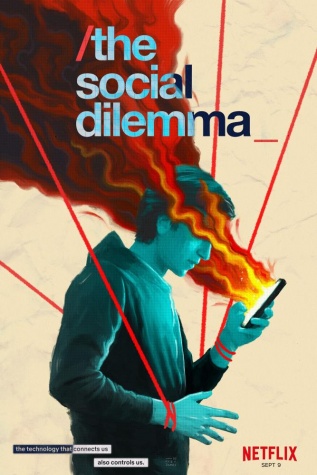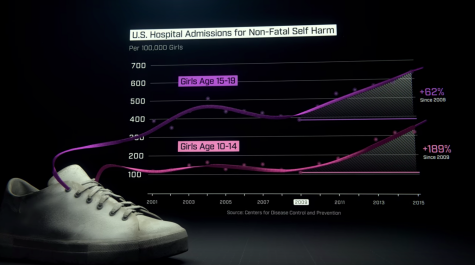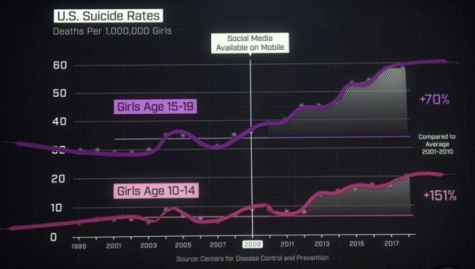
By Danielle Generaux | Student Life Editor
October 25, 2020
On January 26th, Netflix released the documentary-drama hybrid movie The Social Dilemma. The film explores how social media algorithms are designed to get our attention and make us buy goods by exploiting human psychology to impact how we act, and even rewiring our brains.
While the documentary explores the essentially altruistic beginnings of social media, it spends most of its time pointing out that such benign programs have been manipulated over the years to monetize its most lucrative target: people. By interviewing employees from some of the biggest companies, such as Google and Facebook, the documentary explains with analysis and visual examples the consequences of the looming problem of data collection. Together, these pieces create a disturbing story that has rarely been presented before.
The Social Dilemma illustrates how social media is changing the ways that humans behave and act, not how humans are changing social media. For example, functions have been built into social media programs to allow the programs to “machine learn” how a person will act. Once the program has “learned” how an individual will act, the media company then sells this information for a profit so that the sellers can more efficiently target ads to these consumers. Essentially, humans are products.
“I loved the presented ideas of media manipulation and its control on everyone through every walk of life. But, the creators and artists behind it attempted to prove that all teenagers and young adults are brainwashed by radical ideas of division, which in the film caused the main character kid to end up at a protest of some sort and end up being arrested, ” junior Bethany Padilla said.

Tristan Harris, a former Google design ethicist and Center for Humane Technology co-founder said it this way: “if you’re not paying for the product, then you are the product.” Jaron Lanier, a computer philosophy writer and computer scientist, went on to explain that “it’s the gradual, slight, imperceptible change in our own behavior and perception that is the product.”

Specifically, companies like Facebook, Twitter, and Instagram are all free to the consumer, but they need consumers to make money. Every move people take online is tracked and helps to construct an impression of who each individual person is—for example, their likes and dislikes. This information is gathered into a personal algorithm that aims to keep people engaged. Each individual person gets fed information based on everything they do on the app: how long they view posts, what they like, what they ignore, etc. This information is then sold for a profit. The argument that The Social Dilemma puts forward is that technology companies and social media platforms pose a very real danger to our society and democracy, whether we are consciously aware of this or not.
“I thought it was kind of freaky how social media is “taking over” the world and manipulating people,” junior Laura Robertson said. “It helped me understand how social media really works. I thought the show would be pretty boring, but it was actually pretty interesting.”

Especially alarming is the effect on female teenagers. Before 2009, girls between the ages of 10 and 19 in the United States had mostly stable numbers of both suicide and inflictions of self-harm. However, at the mark of the rise of social media, which was about 2009, all rates increased significantly. Since 2009, for girls between the ages of 10-14, suicide rates are up 150% and non-fatal self-harm is up 189%. For this same time frame, for girls between the ages of 15-19, suicide rates are up 70% and non-fatal self-harm is up 62%. The film claims that the pattern points to social media.
The Social Dilemma ended on a much more positive note, urging audiences to use technology less while highlighting that reform always comes from public pressure. It is stated that the only way to fix the problem of control is to place regulations on social media companies.

Leave a Reply